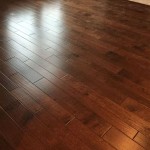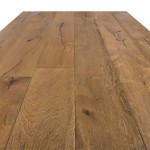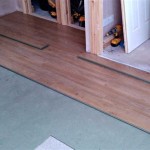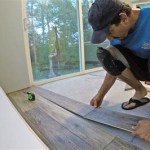Essential Aspects of Formaldehyde In Flooring Testing
Formaldehyde, a colorless, flammable gas with a pungent odor, is commonly used in the manufacturing of various building materials, including flooring. However, the presence of formaldehyde in indoor environments can pose significant health risks. Therefore, testing for formaldehyde in flooring is crucial to ensure occupant safety and regulatory compliance.
Why Is Formaldehyde Testing Important?
Formaldehyde exposure can lead to a range of adverse health effects, including irritation of the eyes, nose, and throat, respiratory problems, and even cancer. Long-term exposure to high levels of formaldehyde has been linked to an increased risk of nasopharyngeal cancer, leukemia, and other severe health conditions.
Testing Methods for Formaldehyde In Flooring
There are several standardized methods used to test for formaldehyde in flooring:
- Small Chamber Method: This method involves placing a sample of flooring in a small, sealed chamber and measuring the formaldehyde emissions using a sampling pump.
- Large Chamber Method: Similar to the small chamber method, but utilizes a larger chamber to accommodate larger flooring samples or multiple samples.
- Desiccator Method: Flooring samples are placed in a sealed desiccator with a sorbent material that absorbs formaldehyde. The formaldehyde absorbed by the sorbent is then analyzed.
Setting Standards and Regulations
To protect public health, various regulatory agencies have established standards and limits for formaldehyde emissions from flooring. These standards vary depending on the jurisdiction and may include:
- California Air Resources Board (CARB): Phase 2 of CARB's Airborne Toxic Control Measure (ATCM) sets limits for formaldehyde emissions from composite wood products, including flooring.
- U.S. Environmental Protection Agency (EPA): The EPA's Indoor Air Quality (IAQ) Standards for New Manufactured Homes establish formaldehyde emission limits for flooring materials used in manufactured homes.
Choosing an Accredited Laboratory
To ensure the accuracy and reliability of testing results, it is crucial to work with an accredited laboratory. Accreditation verifies that a laboratory follows established quality assurance procedures, uses validated testing methods, and has trained and experienced personnel.
Consequences of Non-compliance
Failure to comply with formaldehyde emission standards can result in serious consequences, such as:
- Fines and penalties
- Project delays or cancellation
- Damage to reputation and consumer confidence
Conclusion
Formaldehyde testing in flooring is essential for safeguarding human health and ensuring regulatory compliance. By understanding the testing methods, setting standards, choosing accredited laboratories, and addressing non-compliance consequences, manufacturers, contractors, and consumers can ensure that flooring materials meet safety requirements and create healthy indoor environments.

Testing For Formaldehyde In Wood Flooring

Formaldehyde In Some Laminate Flooring How To Limit Exposure

Formaldehyde Testing Indoor Science

Consumer Reports Tests Formaldehyde In Flooring

Laminate Flooring Formaldehyde Concerns Where To Test Levels

How To Test For Formaldehyde Wood Laminate Hawk Environmental

Do You Have Laminate Flooring Concerns We Test Formaldehyde Indoor Doctor
Laminate Flooring Test Results Health Issues And Solutions

Formaldehyde Understanding Its Health Impacts And Creating Healthy Indoor Environments Doctor

Formaldehyde Third Party Testing Evaluation And Certification Icc Nta
Related Posts








